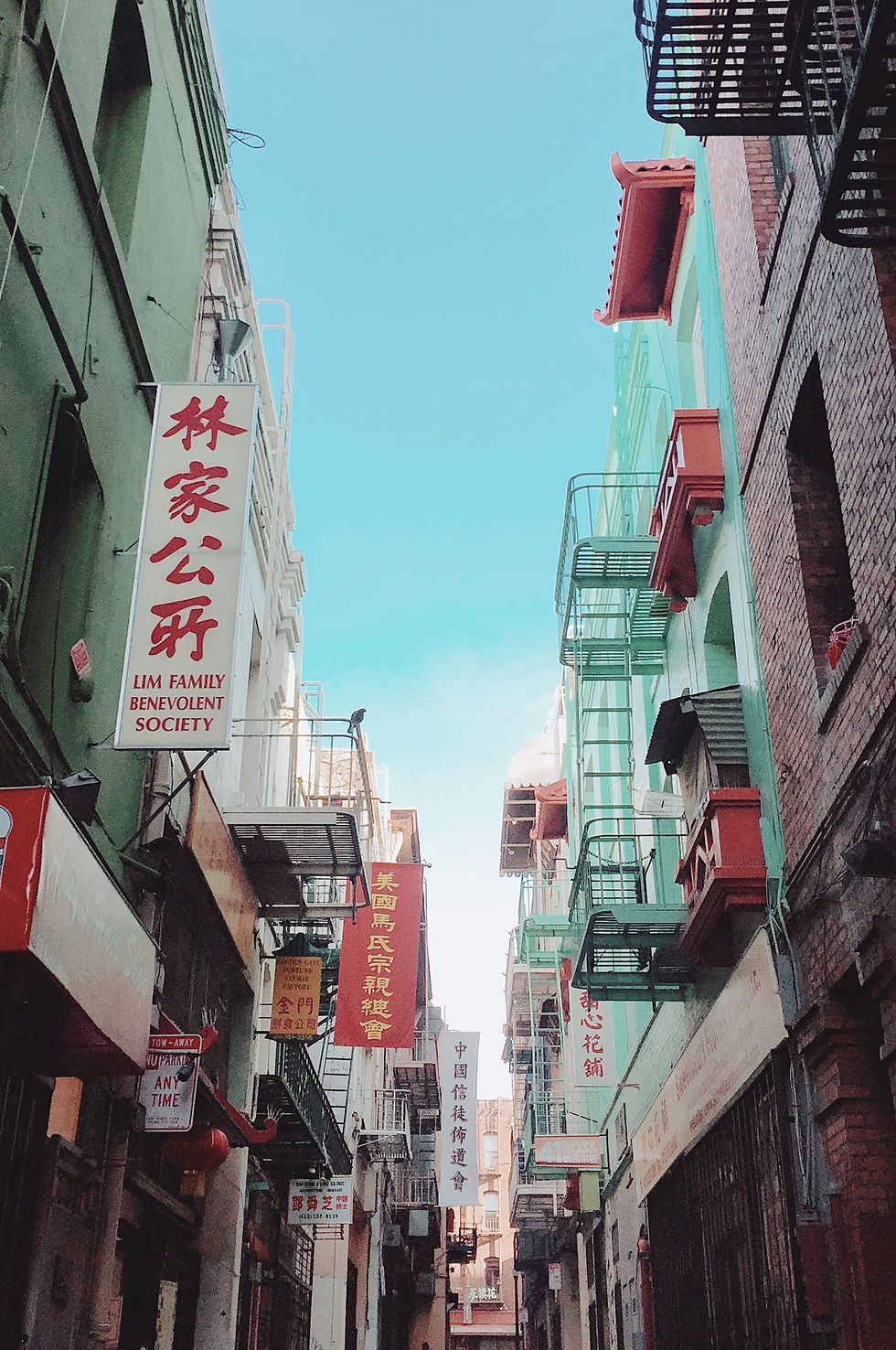More Than an Aesthetic: The Damaging Effects of Gentrification on Chinatown & Communities of Color
- Bryanna Baysa Fong
- Aug 2, 2020
- 3 min read
Updated: Aug 3, 2020

In 1964, my paternal grandparents left Hong Kong with their two young children and immigrated to the United States. They entered through Angel Island and settled in a small apartment in Chinatown. A few months later, my father was born.
Growing up in Chinatown brought its own unique experiences. My dad has fond memories of weaving through the neighborhood’s crowded streets, going to The Great Star Theater with my grandmother to watch Chinese operas, growing up eating home cooked Chinese meals, and listening to the unmistakable sounds of mahjong tiles. It wasn’t until sometime in the 1970s that my family moved to the Outer Sunset (another neighborhood with an abundance of Chinese-American history), where my family has resided ever since.
When I was a child, I remember accompanying my grandmother on the long Muni trips from the Sunset to Chinatown to run errands. I would observe her skilled interactions with vendors, her expertise on Chinese ingredients and produce, and the way she exuded such an amazing sense of confidence within this community.
Since those days, however, I have witnessed the drastic transformation of San Francisco’s Chinatown: high end dining and luxury housing developments are routinely replacing historic Chinese sites and displacing Chinese-American residents. What was once a space for Chinese (and other Asian) communities to transition as new immigrants and cultivate a sense of belonging, has now become a backdrop for White tourism and aesthetically pleasing Instagram posts, desecrating the meaningful history of this incredible neighborhood.
Unfortunately, this is the reality for the Sunset, the Mission, and other neighborhoods with predominantly BIPOC across San Francisco and throughout the nation. The City’s image continues to undergo great change due to its booming tech industry, and it is inevitable that these neighborhoods will feel pressure to change in order to “keep up.” But with the implementation of new and more expensive housing and businesses, the cultural communities that originally existed to serve the needs of its residents are reduced to trendy, “exotic” environments for the upper class’ pleasure and consumption.
So how can these communities “evolve” without suffering from the harmful effects of gentrification? The following are just a few reflections to take into consideration when reimagining the nature of these neighborhoods:
How can housing conditions be improved in these neighborhoods, without aggressively displacing BIPOC from dramatic spikes in property values?
As local and ethnic businesses are “modernized” or replaced, how can the cultural authenticity of these neighborhoods be maintained?
Is it possible for new restaurants and businesses to serve goods and services that are both appealing and, most importantly, accessible to long-time residents of these neighborhoods?
Finding clear solutions to these questions is challenging and complex.
But the bottom line is: gentrification has continuously exploited the images of ethnic neighborhoods across the country at the expense of BIPOC.
City planners, building owners, and new businesses must be held responsible for providing housing and services that will prioritize the needs of these neighborhoods’ residents, rather than the wants of non-residents. It is also important to remember (especially as outsiders visiting these communities) that there is a critical distinction between acknowledging and appreciating the significance of these communities, and appropriating these spaces for one’s own enjoyment. Be aware of the space you occupy and recognize your positionality in these environments - these neighborhoods contain people’s homes, narratives, and histories.
.png)








Comments